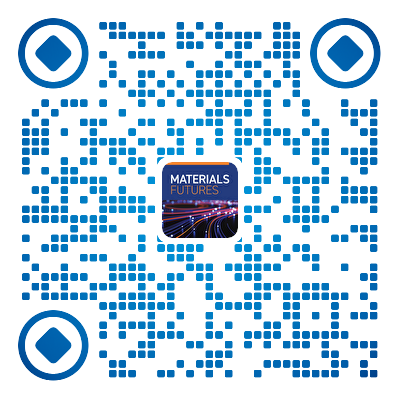To honor the authors' invaluable support and contributions, Materials Futures established the "Best Paper Awards" in 2022, aiming to foster high-quality submissions and advance research in materials science.
Following a meticulous selection process in 2023, including screening by the editorial office based on reviewer and editorial committee evaluations, as well as article metrics, three review papers and three research articles from those published in 2023 were selected. For the research papers, articles published in late 2022 have also been considered. Materials Futures wholeheartedly congratulates all authors of these commendable papers, which are listed below.
P2-type layered high-entropy oxides as sodium-ion cathode materials
Junbo Wang et al. Materials Futures 2022, 1(3): 035104
Manganese-based sodium-ion cathodes alleviate modern society’s anxiety for sustainable and reliable energy solutions, although improvements are still eagerly required. In this work, B. Breitung, Q. Wang, and co-workers report on a series of P2-type layered oxides with varying configurational entropy. The emerging entropy tuning strategy enriches the chemical space of battery materials and creates room for compositional design while aiming for long-term cycling stability.
Reinforced cathode-garnet interface for high-capacity all-solid-state batteries
Chenxi Zheng et al. Materials Futures 2022, 1(4): 045103
Garnet-type solid electrolytes show great potential for improving battery safety and energy density. However, high interfacial impedance remains a major challenge towards advanced bulk-type all-solid-state batteries (ASSBs). This work demonstrates the construction of a reinforced cathode/garnet interface by spark plasma sintering, and provides guidance for future developments of high-capacity garnet-based ASSBs.
Synthesizability of transition-metal dichalcogenides: a systematic first-principles evaluation
Tenglong Lu et al. Materials Futures 2023, 2(1): 015001
Transition-metal dichalcogenides (TMDs) exhibit numerous structural polytypes and unique physical properties. While previous research has mainly focused on synthesizability, the polymorphic phases of TMD compounds have not been thoroughly explored. This study utilizes high-throughput first-principles calculations to systematically investigate the extensive phase space of TMDs.
Nanowire-based synaptic devices for neuromorphic computing
Xue Chen et al. Materials Futures 2023, 2(2): 023501
Brain-inspired neuromorphic computing is considered an important strategy to break the von Neumann bottleneck. There is an enormous number of neurons and synapses in human brains. The spike signals are transmitted from one neuron to another through synapses. Depending on the neural network, the human brain can process information with high speed, low power consumption, and high accuracy. Thus, mimicking the synaptic functionalities of human brain is essential for neuromorphic computing. As an important building block for nanoelectronics and optoelectronics, nanowires offer the advantages of high aspect ratio, high carrier mobility, and large surface-to-volume ratio. In this perspective, Zhou and co-workers propose future directions of nanowire-based synaptic devices in neuromorphic systems.
Extending MoS2-based materials into the catalysis of non-acidic hydrogen evolution: challenges, progress, and perspectives
Hao Fei et al. Materials Futures 2023, 2(2): 022103
Water splitting is considered the most promising method for generating green hydrogen. Transitioning from acidic to non-acidic electrolytes holds the potential to utilize noble-metal-free catalysts and reduce material corrosion, thereby decreasing the capital cost of water electrolyzers and enhancing their operational stability. However, elevating the pH may hinder the hydrogen evolution reaction (HER) activity, resulting in sluggish processes. To expedite HER, MoS2-based materials have emerged as promising electrocatalysts (as substitutes for Pt in acidic conditions), offering unique atomistic structures, low cost, and high abundance. This study presents a systematic review of MoS2-based electrocatalysts for non-acidic HER, encompassing catalytic mechanisms, modulation strategies, material developments, and current challenges, and further provides a critical reference for designing next-generation HER catalysts.
Recent advances on two-dimensional metal halide perovskite x-ray detectors
Mingyue Han et al. Materials Futures 2023, 2(1): 012104
Perovskite metal halides show great potential in X-ray detection applications owing to their high X-ray stopping power and tailorable bandgap for absorption and subsequent carrier generation. Zhang, Hu, Jiang, and co-workers provide a comprehensive overview of the general working principles of direct and indirect X-ray detection processes and the corresponding performance metrics from the perspective of detection and imaging. They also discuss recent advances in 2D perovskite X-ray detectors and imaging devices, demonstrating that state-of-the-art 2D perovskites have detection efficiencies similar to those of 3D perovskites. The authors further highlight major obstacles that need to be overcome in the near future, such as the need for high-quality 2D perovskite materials and mitigating lead toxicity concerns through the development of advanced lead-free perovskites.











